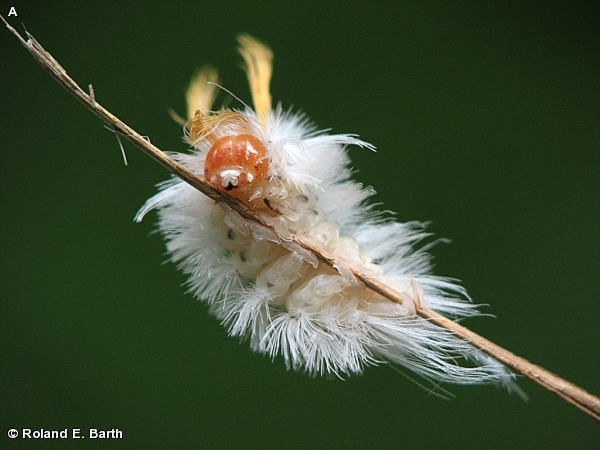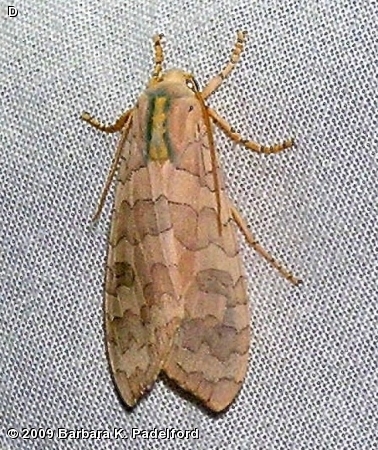
The Sycamore Tussock Moth grows to approximately 1.75 inches. The caterpillar has very thick whitish hair with long tufts at both ends. At the head, the tufts are orange and white. At the rear, the tufts are white. The head is reddish-brown. The caterpillar of the Banded Tussock Moth is similar in appearance except that the ground color is yellow-brown to gray with long black and white tufts at both ends. The adult moth has a wingspan of about 1.75 inches. The wings are pale yellow or buff and are translucent. The forewing has irregular brown bands.
The frequency of occurrence of the Sycamore Tussock Moth in this area is not well known. The caterpillar has been photographed in late August 2009 and late August 2015. There are 2 generations a year. This is the northwestern edge of the range of the American Sycamore tree (Platanus occidentalis), the food plant of this caterpillar.
The pupa overwinters in a cocoon that is lined with the caterpillar’s hairs. The adult moths of the Sycamore Tussock and the Banded Tussock are identical and cannot be separated except by dissection or DNA analysis. The adult moth (Sycamore and/or Banded) is common and is seen frequently in mid-to-late summer. We have identified both species of caterpillars at Fontenelle Forest.
Disclaimer: The content of NatureSearch is provided by dedicated volunteer Naturalists of Fontenelle Forest who strive to provide the most accurate information available. Contributors of the images retain their copyrights. The point of contact for this page is: Babs Padelford.


